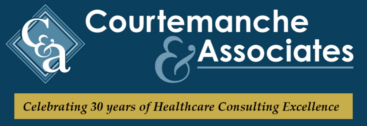Inspection of instrumentation is essential to the safety of the patients under our care. The community expects that the care they are receiving in their healthcare facility is safe and that they will not have an adverse event while hospitalized, such as developing an infection.
During a regulatory survey, surveyors will trace instruments from the Operating/Procedure Rooms as well as the nursing units to the reprocessing area. They are looking to ensure that point-of-use cleaning is performed, this includes rinsing the instruments to remove gross debris and treating instrumentation with an enzymatic product to prevent the sticking of bioburden, blood, bone, etc. Once the instruments are transported and received in Sterile Processing in a leak-proof, puncture-proof container that contains a biohazard sticker on it, the Sterile Processing team takes over.
The Sterile Processing team will look to see if point-of-use cleaning is performed and will then wash the instruments and get them ready for sterilization. However, before sterilization can take place the instruments need to be inspected to ensure that they are safe for use and free of any debris. This is an important step in the process and one that surveyors are finding is not always being performed properly. From visualization to checking for alignment and sharpness, to properly utilizing the bore scope or insulator tester, issues are being found and cited.
Since this is an infection control as well as a safety issue, let’s go through the process of inspection of instruments. Some questions that the surveyors are asking themselves when surveying this aspect of the reprocessing of instruments are:
- Is point-of-use cleaning being performed?
- Do staff have access to magnifying lights and are staff using them?
- Are staff ensuring the instruments are clean prior to sterilization?
- Are staff inspecting the instruments for any damage or defects?
- Are the instruments inspected to ensure they are functioning properly and as intended?
- Are staff comfortable removing instruments from use when their function is questionable?
Once the instruments are received, soaked, manually cleaned, and put through the washer, they then are put into trays and wrapped for sterilization. During the process of readying them for sterilization, they need to be inspected by the sterile processing technicians. Some of the tools that are needed to ensure that these instruments are clean, aligned, free of damage and defect, and functioning as intended are magnifying lights, latex-free resistance bands (ie: Theraband ©), borescopes and insulator testers. Magnifying lamps give you the ability to visualize the nooks and crannies and the resistance bands give you the ability to test for sharpness of the instruments. Borescopes allow for remote visual inspections in areas where it is difficult or impossible for the human eye to see into directly.
Insulator testers are electrical meters used to determine the condition of the insulation on instruments which may be compromised and cause a patient to get burned.
Inspection Guide to Various Parts of Different Instruments
- Joints – Check for smooth movement with excessive play. Make sure box locks and hinges open and close correctly.
- Tips – Inspect tips for damage, pitting, cracks, and wear. Make sure tips align correctly and meet precisely.
- Teeth and Jaws – Check for broken, chipped, or worn teeth. Make sure jaws have good alignment and closing tension.
- Locking Mechanism – Test ratchets, catches, locks, screws, and other devices to ensure they engage and release properly.
- Connectors – Look for loose, damaged, or corroded connectors.
- Identification – Verify all makings, gauge measurements, and other engraved ID details are present and legible. Ensure that instrument tape, if used, is applied per the manufacturer’s instructions for use and that there is no peeling, cracking, lifting, etc. of the tape.
- Sharpness - Use proper testing materials to check sharpness of scissors, rongeurs, and osteotomes. Blades should cut cleaning.
- Insulation – Test insulation on handles and shafts to ensure no cracks or fraying are present. Insulator tester in used.
- Cleanliness- Check for residual soil, debris, lubrication, or bodily fluids. Instruments should be visibly clean after processing, including under magnification.
- Corrosion – Looks for signs of rust, pitting, discoloration, or cracks from chemical exposure.
- Lumen – Ensure lumens and cannulas are free of debris, damage, or moisture. Borescope is used, if available.
How to Check Proper Functionality On Various Instruments
- Scissors - Open them half-way and close on a test material or glove.
- Rongeurs - Cut a 3x5 index card, business card or material of similar weight.
- Osteotomes - Using a plastic testing rod or dowel, or a plastic syringe barrel, test the cutting edge.
- Needle Holders - The jaws of the needle holder should come together at the tips, without having to apply closing pressure on the first ratchet.
- Clamps - Close the clamp on the first ratchet and hold it up to the light while continuing to close the ratchet.
- Vascular clamps - To test the atraumatic “teeth,” fill a zip lock bag with water.
- Forceps - Toothed forceps should engage evenly when being closed.
- Curettes - Test the sharpness of the curette on a plastic rod, dowel or syringe barrel, as with the osteotome.
In summary, inspecting instrumentation every time they are reprocessed, keeps the instruments working as they are intended, deeming them safe to use, preventing harm and injury to the patients, and minimizing surgical/procedural infections. With all this said, customer and physician satisfaction will be positive as adverse events are prevented through diligent care of the instruments.
To learn more about Inspection of Instruments contact the Courtemanche and Associates Team at 704-573-4535 or email us at info@courtmanche-assocs.com.

